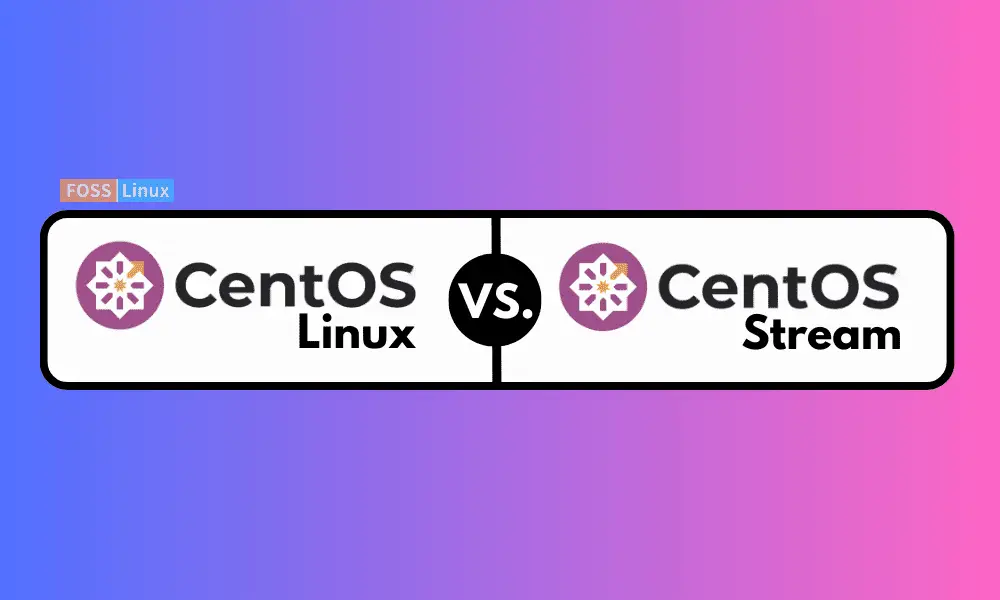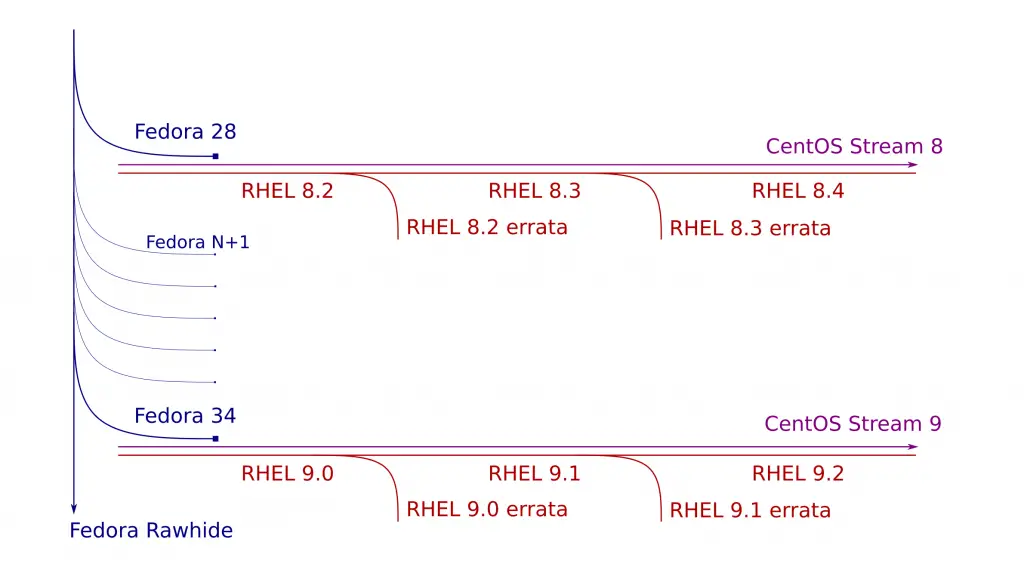Centos Stream Vs. Fedora: Streamlined Development Compared

Executive Summary

Centos Stream is a rolling-release version of Red Hat Enterprise Linux (RHEL) offering stability and security comparable to the non-rolling-release RHEL. Fedora is a community-developed Linux distribution derived from Red Hat Linux. Both offer advantages in different development scenarios. This article will explore the advantages and disadvantages of Centos Stream and Fedora, enabling developers to make informed choices.

Introduction
Open-source operating systems like Centos Stream and Fedora empower developers with choice and flexibility in their software development processes. This article examines the key differences between these two popular Linux distributions, guiding developers in selecting the optimal platform for their specific requirements.
Centos Stream
Centos Stream is a Linux distribution designed for enterprise use cases. It provides developers with continuous access to the latest software updates, ensuring they have the most recent security fixes and performance enhancements. Unlike traditional RHEL, which follows a stable, predictable release schedule, Centos Stream continuously receives updates from the CentOS Linux source.
- Predictable updates: Centos Stream provides predictable updates that align with the RHEL development cycle, simplifying package management and version control for developers. This allows developers to plan their software development and deployment activities more effectively.
- Continuous integration: Centos Stream’s continuous integration process ensures that software updates are thoroughly tested before being released. This reduces the likelihood of errors or compatibility issues, improving the stability and reliability of the system.
- Wide software availability: Centos Stream offers access to a vast repository of software packages, including the latest versions of popular development tools, programming languages, and application software. Developers can easily find and install the necessary components for their projects.
- Community support: Centos Stream enjoys strong community support, with numerous online forums and resources where developers can seek help or share knowledge. This support network helps developers troubleshooting issues and learning about new features.
Fedora
Fedora is a community-developed Linux distribution that serves as a testing ground for new technologies and innovations. It offers a cutting-edge development environment that gives developers early access to the latest software releases and features. Fedora is not designed for enterprise use and is not as stable as Centos Stream, making it more suitable for rapid development and prototyping.
- Bleeding-edge software: Fedora is known for providing the latest versions of software packages as soon as they are released. This enables developers to explore emerging technologies and incorporate them into their projects. It also allows developers to stay ahead of the curve in terms of software trends and advancements.
- Community involvement: Fedora’s strong community involvement makes it a vibrant and responsive platform for developers. Users can interact directly with developers, contribute to the project, and influence the future direction of the distribution. This open and collaborative environment fosters innovation and encourages user participation.
- Security updates: While Fedora is not as stable as Centos Stream, it receives regular security updates to address vulnerabilities and threats. This ensures that systems based on Fedora remain secure and protected from malicious actors.
Conclusion
Both Centos Stream and Fedora offer distinct advantages depending on the development context. Centos Stream provides stability, security, and predictable updates, making it suitable for mission-critical enterprise applications. Fedora offers a cutting-edge development environment with early access to new software and features, making it ideal for rapid development, prototyping, and testing. Developers should carefully consider their specific requirements and choose the platform that best aligns with their project needs.
Keyword Phrase Tags
- Centos Stream vs. Fedora
- Open-source operating systems
- Linux distributions
- Software development
- Enterprise use cases

=====Centos Stream Vs. Fedora: Streamlined Development Compared=====
An informative article about the differences between Centos Stream and Fedora. I found this difference particularly striking:
“Centos Stream is a rolling release, which means that it is constantly being updated with the latest software packages. Fedora, on the other hand, is a fixed release, which means that it only receives major updates every six months.”
Fedora is better than Centos Stream because the major updates every six months could take ages to get.
Centos Stream is a downstream project of Red Hat Enterprise Linux (RHEL), which is a commercial Linux distribution.
Fedora is an upstream project of RHEL.
“Centos Stream is more suitable for users who want the latest software packages and are willing to deal with the potential instability that comes with a rolling release.” but i dont think thats going to be a problem.
“Fedora is more suitable for users who want a stable system and are not as concerned about having the latest software packages”
I use Arch btw.
“Centos Stream is for those who want to live on the bleeding edge, while Fedora is for those who prefer stability.” nice one!
hahahah so true!!
Centos Stream is a good choice for developers who want to test the latest software packages before they are released in RHEL.